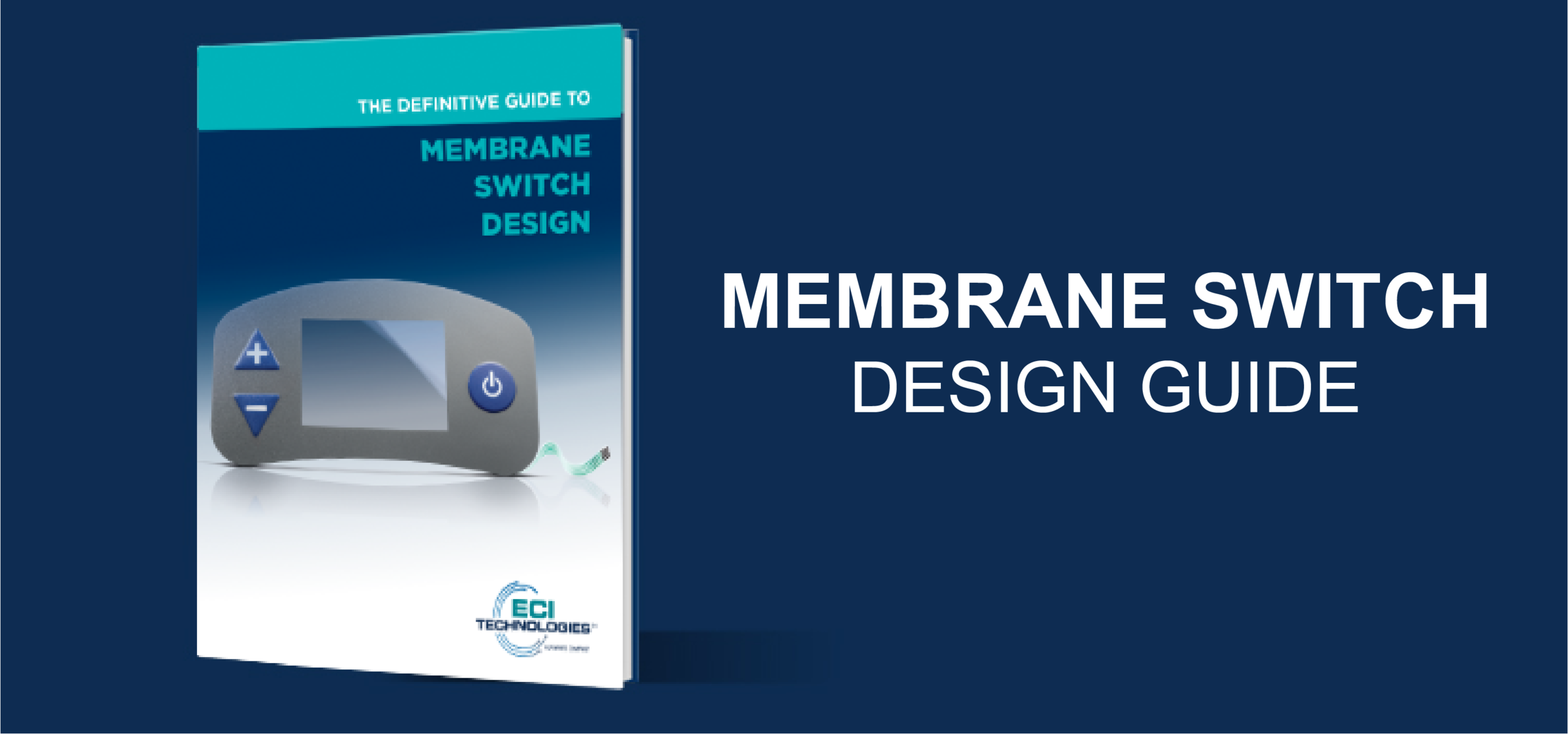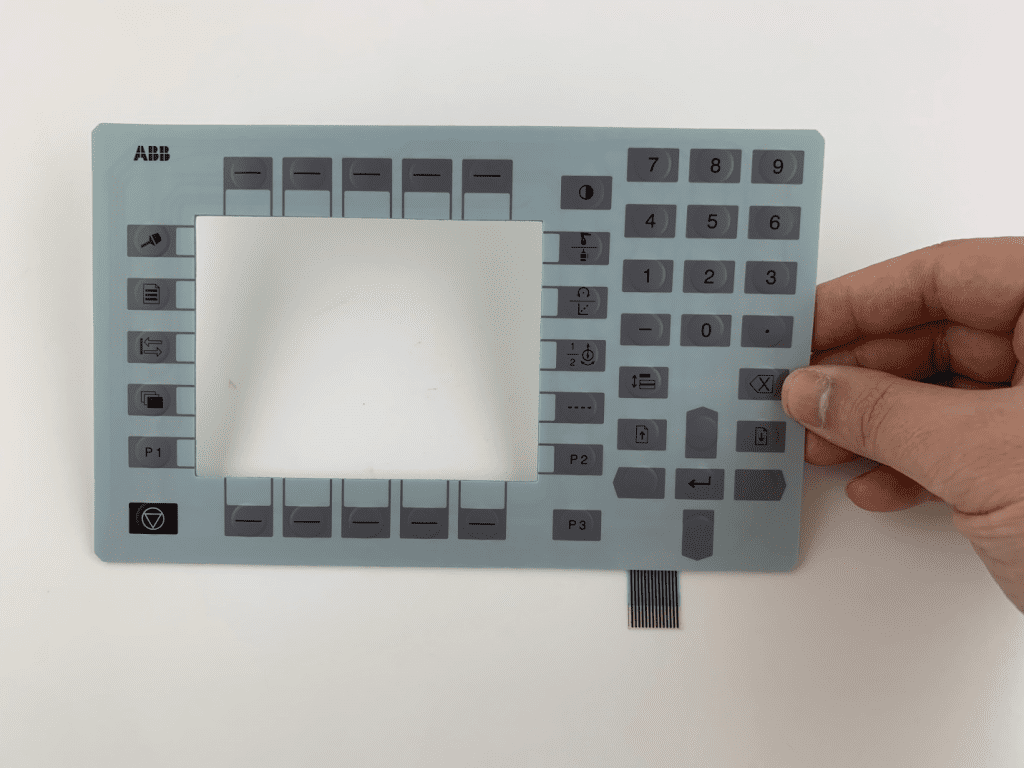Membrane Switches vs. Traditional Switches: What You Need to Know
Membrane Switches vs. Traditional Switches: What You Need to Know
Blog Article
Recognizing the Value of Membrane Switches in Customer User Interfaces
Membrane buttons are important parts in the style of effective interface, promoting not only functionality but also enhancing visual allure and customer interaction. Their special functions, such as resistance to personalized designs and ecological variables, make them ideal for a varied selection of applications throughout numerous markets. As we discover the future fads and various benefits related to Membrane technology, it comes to be clear that these switches are much more than simply components; they represent a convergence of innovation and practicality. The ramifications of this modern technology on individual experience deserve taking a look at even more.
What Are Membrane Switches?

The spacer layer, which includes glue properties, enables the splitting up of the circuit layer from the overlay, ensuring that the button stays in a non-activated state until pressed. When stress is related to the overlay, it presses the spacer layer, connecting the void and finishing the circuit in the underlying layer. This style not only decreases the physical room needed for conventional mechanical switches however also enhances the toughness of the gadget, as Membrane switches are typically immune to dirt, wetness, and various other ecological factors.
Typically located in applications varying from consumer electronics to clinical devices, Membrane buttons are essential to modern innovation, offering a straightforward and reliable user interface that straightens with modern design needs.
Benefits of Membrane Switches
While numerous button technologies exist, Membrane Switches deal unique advantages that make them especially preferable in different applications. One of the key advantages of Membrane buttons is their small layout, which enables space-saving executions in devices where real estate is limited. Their thin account not only improves visual charm however likewise promotes light-weight building and construction.
Another significant advantage is their resistance to ecological factors. Membrane switches are normally secured versus dampness, dust, and impurities, making them perfect for use in demanding environments, such as clinical devices and commercial tools. This resilience prolongs the life-span of the switch, decreasing maintenance prices and enhancing integrity.
Moreover, Membrane switches can be tailored to fulfill certain layout demands, including distinct graphics and shades that enhance customer communication. Their responsive feedback alternatives can likewise be customized to supply an enjoyable customer experience. Furthermore, Membrane buttons are economical, specifically in high-volume applications, as they can be created efficiently.
Applications in Different Industries

In the customer electronics market, Membrane buttons are prevalent in gadgets such as microwaves, cleaning machines, and push-button controls. Their responsive feedback and aesthetic choices improve individual experience while supplying a smooth, modern-day look. Additionally, automotive producers make use of Membrane switches in dashboard controls and infotainment systems, where area is limited, and customer engagement is critical.
Additionally, the industrial field leverages Membrane buttons in control panels for equipment site web and equipment, enabling instinctive procedure in commonly extreme settings. Their resistance to chemicals and dampness makes sure durability and integrity in these applications. In general, the versatility of Membrane Switches adds dramatically to their prevalent use, making them essential in various technical domains.
Layout Factors To Consider for Membrane Switches

When making Membrane switches, several vital considerations have to be considered to ensure optimum capability and user experience. go The option of products is essential; picking resilient, top quality substratums can enhance the button's long life and resistance to environmental factors such as dampness and temperature level variations.
Secondly, the layout of the visuals overlay ought to focus on quality and convenience of usage. Symbols and message need to be readable, and the format needs to help with instinctive communication (membrane switches). In addition, tactile feedback is vital; integrating a responsive dome or other devices can enhance the user experience by providing physical confirmation of activation
One more vital factor is the switch's electric performance. Developers have to make certain that the conductive traces are correctly made to lessen resistance and stay clear of signal interference. This entails evaluating the required actuation pressure and guaranteeing compatibility with the electronic components they will user interface with.

Future Trends in Membrane Technology
As technology remains to development, Membrane switches are positioned to develop substantially, driven by technologies in materials and manufacturing strategies. One arising trend is the consolidation of advanced materials, such as adaptable substrates and conductive inks, which enhance sturdiness and decrease the overall weight of Membrane buttons. These materials not just enhance the responsive response yet likewise permit the design of buttons that can endure harsher ecological problems.
Additionally, the combination of touch-sensitive modern technologies is transforming traditional Membrane Switches right into even more interactive interface. Capacitive touch sensors installed within Membrane switch panels can offer a much more instinctive and responsive individual experience, aligning with the growing need for streamlined, modern-day designs in consumer electronic devices.
In addition, developments in printing strategies, such as electronic and 3D printing, make it possible for rapid prototyping and modification of Membrane buttons. This versatility allows producers to react faster to market needs and consumer choices.
Finally, sustainability is ending up being a significant focus, with producers checking out eco-friendly materials and procedures. As these trends unravel, the future of Membrane technology promises enhanced functionality, visual allure, and ecological obligation, solidifying their function in innovative customer interfaces throughout different industries.
Final Thought
In verdict, Membrane Switches stand for an essential element in the design of user interfaces, combining functionality with aesthetic versatility. As advancements in modern technology proceed, the advancement of Membrane buttons is anticipated to further improve individual interfaces, driving innovation and boosting functionality in a progressively intricate technological landscape.
Membrane switches are indispensable elements in the design of reliable customer interfaces, promoting not only capability but also check it out improving visual charm and customer interaction.Membrane Switches serve as an important component in various user interfaces, assisting in a seamless interaction between users and digital devices.While many switch innovations exist, Membrane Switches deal distinctive benefits that make them specifically desirable in different applications.In addition, Membrane switches can be personalized to meet details style needs, integrating special graphics and shades that enhance user communication.In verdict, Membrane Switches stand for a crucial component in the layout of individual interfaces, incorporating performance with visual flexibility.
Report this page